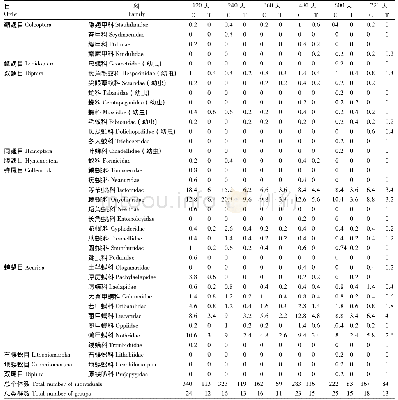《Table 5–Effect of species richness and presence of individual species on N2O emission in multiple l
 提示:宽带有限、当前游客访问压缩模式
提示:宽带有限、当前游客访问压缩模式
本系列图表出处文件名:随高清版一同展现
《Effects of plant diversity on greenhouse gas emissions in microcosms simulating vertical constructed wetlands with high ammonium loading》
Note:Significant P values(P<.05)are highlighted.
As previously noted,plants species can differ greatly in mediating the production,consumption,and transport of N2O and CH4(Cheng et al.,2007;Maltais-Landry et al.2009;J?rgensen et al.,2012).In this study,the communities with R.japonicus present reduced N2O emissions by 62%compared those communities absent of this species(Tables 4 and 6).Such results may have been due to the high biomass of this species helping to improve the utilization of underground resources(Palmborg et al.,2005),and then reduced N2O emissions.The presence of R.japonicas decreased the N concentration in effluent and increased plant biomass certificated this point(Table 4).In addition,R.japonicas has aerenchyma,which may increase the oxygen concentration in the root zone then inhibit the denitrification and decreased N2O emission(Canfield et al.,2010).It should also be noted that aboveground biomass per individual of this species was relatively higher than expected in mixed communities(Fig.3),that means this species is consistently dominant in mixed plant communities(Engelhardt and Ritchie 2001).The dominance of this species in terms of biomass under high N availability is also documented in previous studies(Luo et al.,2016;Han et al.,2017).This competitive advantage may improve its performance in mixed microcosms and overall be well suited in CWs for reducing N2O emissions.
| 图表编号 | XD0033520400 严禁用于非法目的 |
|---|---|
| 绘制时间 | 2019.03.15 |
| 作者 | Wenjuan Han、Guiying Luo、Bin Luo、Chenchen Yu、Hai Wang、Jie Chang、Ying Ge |
| 绘制单位 | College of Life Sciences, Zhejiang University、College of Chemistry and Life Sciences, Zhejiang Normal University、College of Life Sciences, Zhejiang University、College of Life Sciences, Zhejiang University、College of Life Sciences, Zhejiang University、Coll |
| 更多格式 | 高清、无水印(增值服务) |
查看“Table 5–Effect of species richness and presence of individual species on N2O emission in multiple linear regressions.”的人还看了
-

- 表1 华北地区国家级自然保护区内药用维管植物的物种丰富度Table 1 Species richness of medicinal vascular plants in national nature reserves in North C
-

- 表2 华北地区保护区内有分布记录药用维管植物物种数量排名前十的科信息Table 2List of families of top ten species richness of medicinal vascular plants in th
-

- Table 1 Effect of different sucrose concentrations on pollen germination of superior individual L1 of L.caerulea





